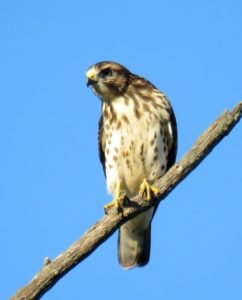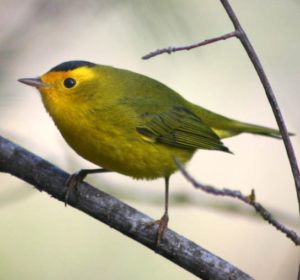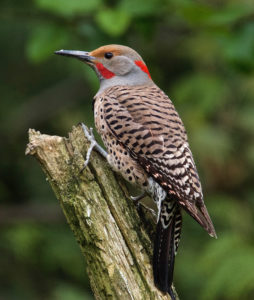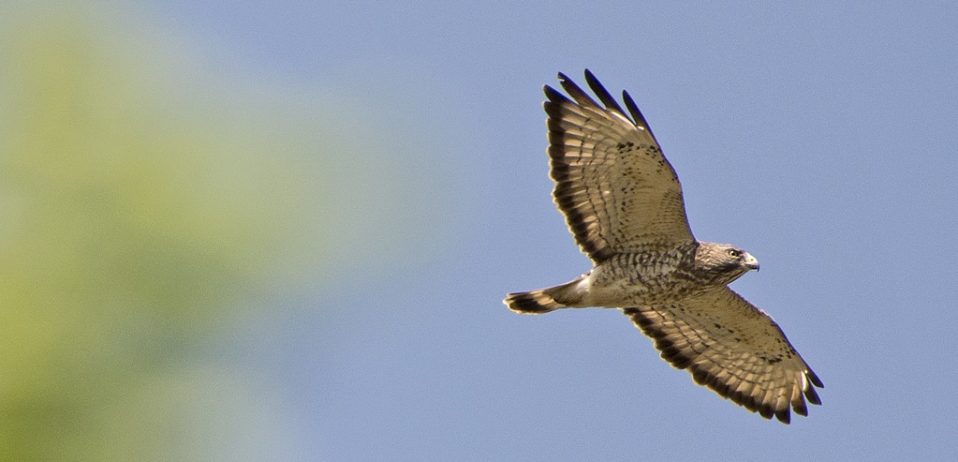Wildlife Wednesday: Fall Bird Migration
Autumn is a great time to head outdoors and experience all kinds of migrating animals, creatures heading South for the winter. This week, we thought we’d focus on fall migrating birds that we’ve seen recently at the Nature Discovery Center. It really is an excellent time to head outside to find birds that we don;t normally see around the Houston area.

Fall is a time when many more northern hawks return to the Houston area, and one of the hawks we see here in great numbers is the Broad-wing Hawk (Buteo platypterus). Broad-wings nest and raise young across the Eastern United States, and then funnel through Texas during the fall to overwinter in Mexico, Central America and South America. These predators feed on a wide variety of smaller animals, like rodents, birds, snakes, frogs, and large insects. We usually see them flying high over the park during fall migration, but they occasionally perch on a high branch to rest for a bit, as well. They’re best seen from the open areas of the park.

The New World Warblers aka Wood Warblers are one of the groups that birdwatchers most look forward to seeing during Spring Migration, with their bright colors. Warblers don;t migrate through in the same concentrations in the Fall, but we do get plenty of them on good migration days. Wilson’s Warblers (Cardellina pusilla) have been passing through the park the last couple of weeks. These bright yellow warblers are fading into their drabber winter plumage now, but are still adorable. They nest in Canada, Alaska, and the Pacific NW of the United States, and pass through our area during Spring and Fall migration.

The wintering woodpeckers have begun to pass through our area as well, with the recent sightings of Yellow-bellied Sapsuckers and Northern Flickers () in the park. Though Flickers do nest to the East and North of the city, we really only get them here in the park during migration and in the winter. These large brown un-crested woodpeckers are easily told apart from other similarly sized woodpecker species. They spend more time on the ground than other native woodpeckers, looking for food, and can be heard loudly rapping on dead wood and calling ki ki ki ki ki through the forest and across neighboring yards.
Thanks for joining us this week to have a look at a few birds that have recently passed through the park as part of their Fall migration. If you get a chance, come out some day, and wander the park with a pair of binoculars and have a look for yourself.
Thanks so much, see you soon!
Eric Duran
Staff Naturalist
photographs: Top hawk – Patty McGann | Flickr; Hawk – Brian Henderson | Flickr; Warbler by Michael Woodruff | Wikimedia; Flicker by Jerry McFarland | Flickr



